February 1, 1981
24 Hours of Daytona
Daytona Beach, Florida
Ferrari 512BB/LM S/N 34445
Result: DNF

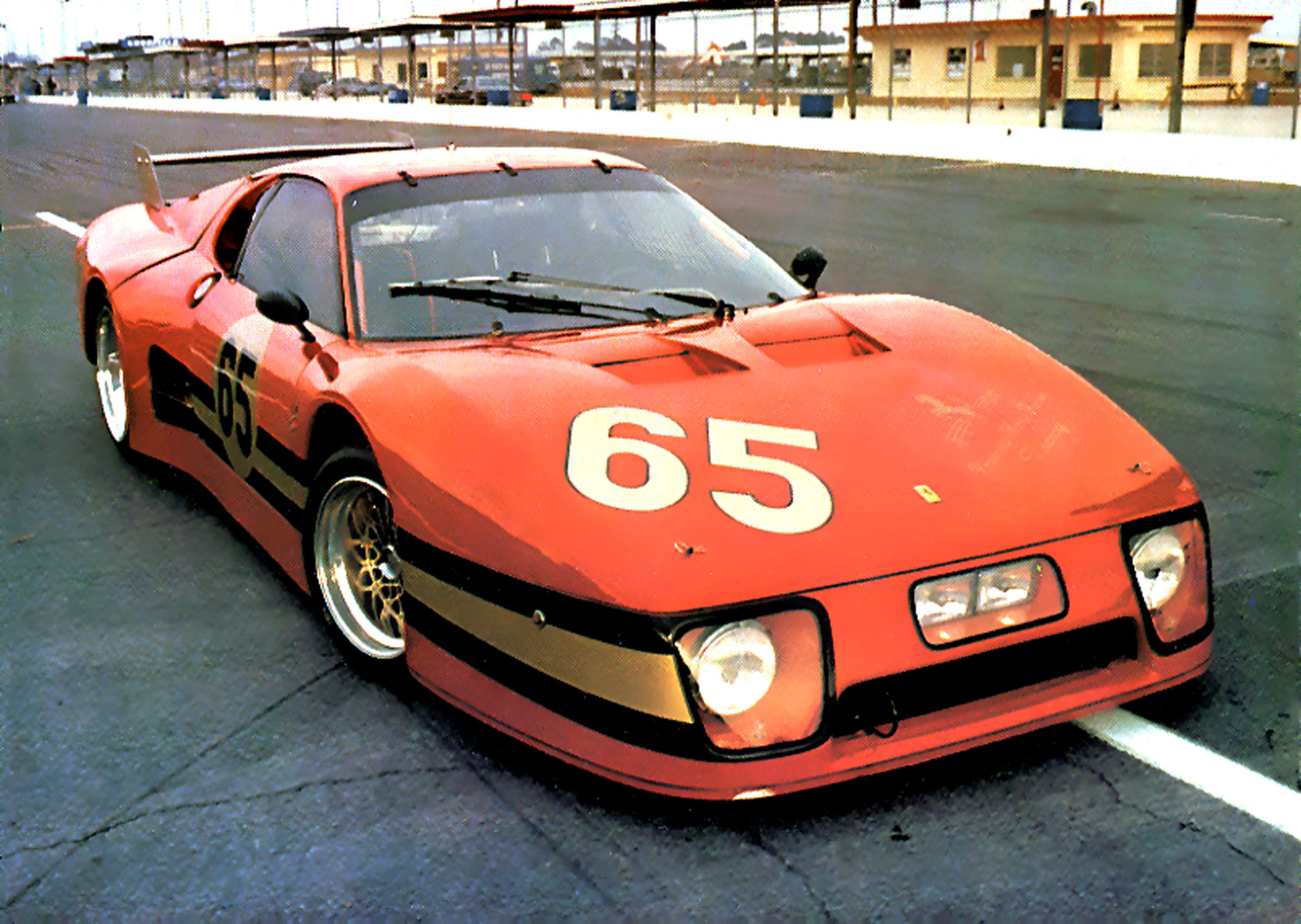
Photo courtesy of Ron Spangler
1981 Ferrari 512BB/LM S/N 34445, with co-driver Rick Knoop for Ron Spangler’s private Ferrari team Prancing Horse Farm. Lee Dykstra redesigned rear geometry to accept 19″ wide wheel/tire combination, the only 512 at the time with that modification. It worked well, but the taller tires affected gearing, no lower gearing was available thus slow accelerating out of the turns.
The engine had normal aspiration & about 450 HP. Great top speed, 212 mph at start/finish, plus superb braking.
In 1981, I was asked by Ron Spangler to drive his Prancing Horse Farms 512 BB/LM (s/n 34445) at the 24 Hours of Daytona. I had some trepidation about the offer: A few years earlier, I had watched with horror as NART’s BB/LM crashed on Daytona’s high banking due to tire failure. I asked Spangler what had been done to solve the problem and was thrilled to hear that he had hired professional race-car designer Lee Dykstra to redesign the rear suspension. In doing so, the normal 16-inch rear wheels and tires gave way to the more modern 19-inch wheels and tires used by the twin turbocharged Porsches. Goodyear provided us with the same tires as the 935s. The biggest challenge we had to overcome was not being able to test the reworked car prior to the race. But when co-driver Rick Knoop and I arrived at Daytona and were greeted by mechanic Francois Sicard, who had worked on many of the NART racers I had driven in the past, I knew we were in good hands. Sitting in the BB/LM, as I looked out the vast windscreen, I felt very far forward in the cockpit; the nose extended so far that the driver couldn’t see it. The small racing mirrors offered little vision to the rear, but I told myself, Looking backwards is not what it’s all about. We discovered a few problems early in practice. The first was that the front brakes were too sensitive; you could hardly press on the pedal before the front tires locked up. Adjusting the brake bias rearward didn’t work, and we didn’t have a smaller front master cylinder. Creative thinking was called for, so I suggested we redo the brakes, having the rear master cylinder activate the front brakes, and vice versa. Although this suggestion received skeptical looks, we got lucky; after the change, the fronts were no longer locking up, and the properly proportioned rears allowed the car to squat flat under braking. The next challenge was the lack of acceleration from the normally aspirated flat-12 engine. Since it only delivered about 450 horsepower compared to the Porsche’s 750, we needed a shorter change gear-the gear that governed the BB/LM’s final drive-to lower the overall final drive ratio and allow us to come off the infield turns competitively. We were informed that we had the lowest gear available, and since there was no time to have a new one machined and heat-treated for the race, we were relegated to “run what we brung.”
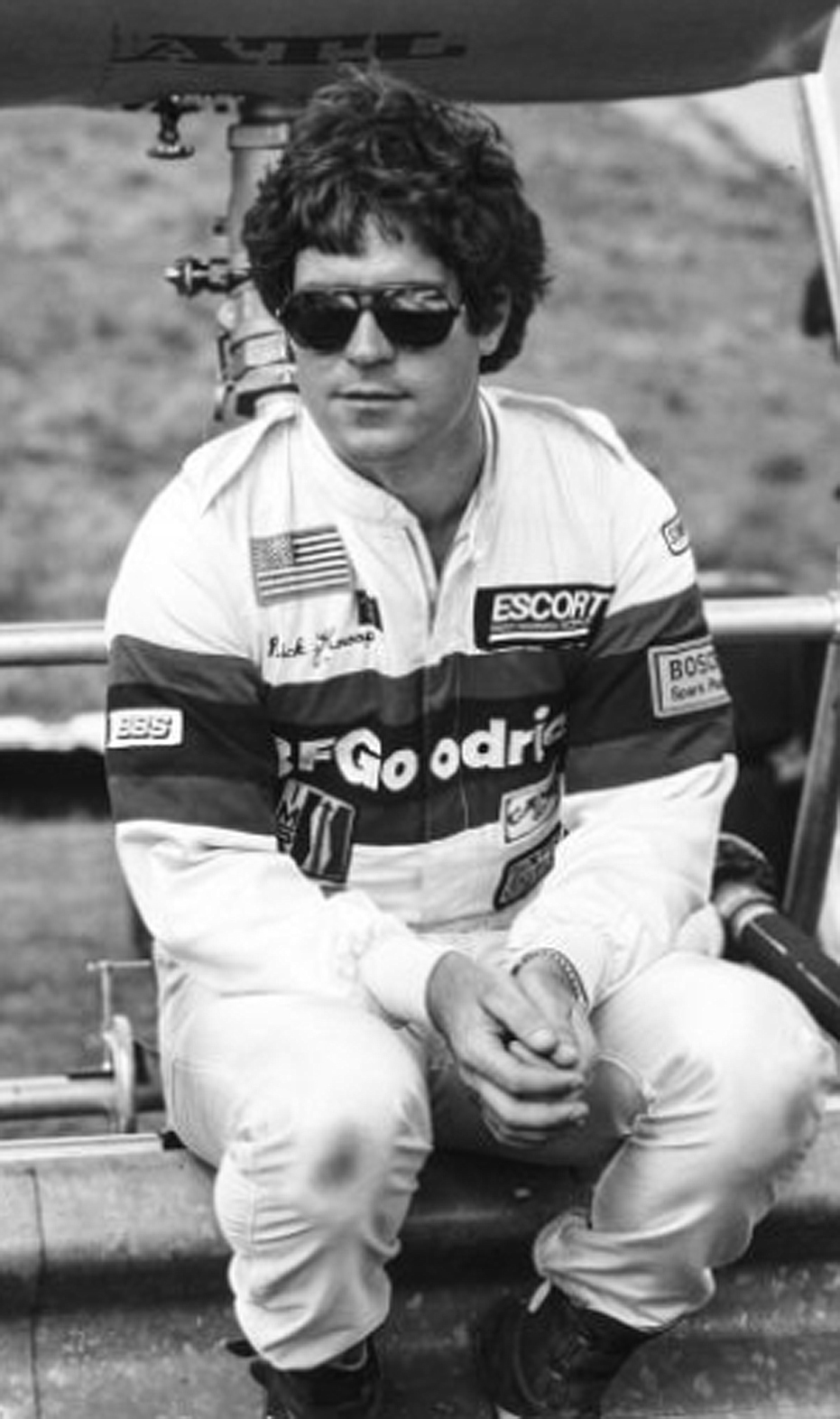
Adamowicz collection
Tony’s teammate for the 1981 Daytona race, driver Rick Knoop. Rick and Tony became good friends over the years.
The business end of the Ferrari 512 BB/LM

Adamowicz collection

Photo courtesy of Ron Spangler
Left to right: Bob Donner, Jon Masterson, Tony, Rick Knoop, and chief mechanic Francois Sicard.
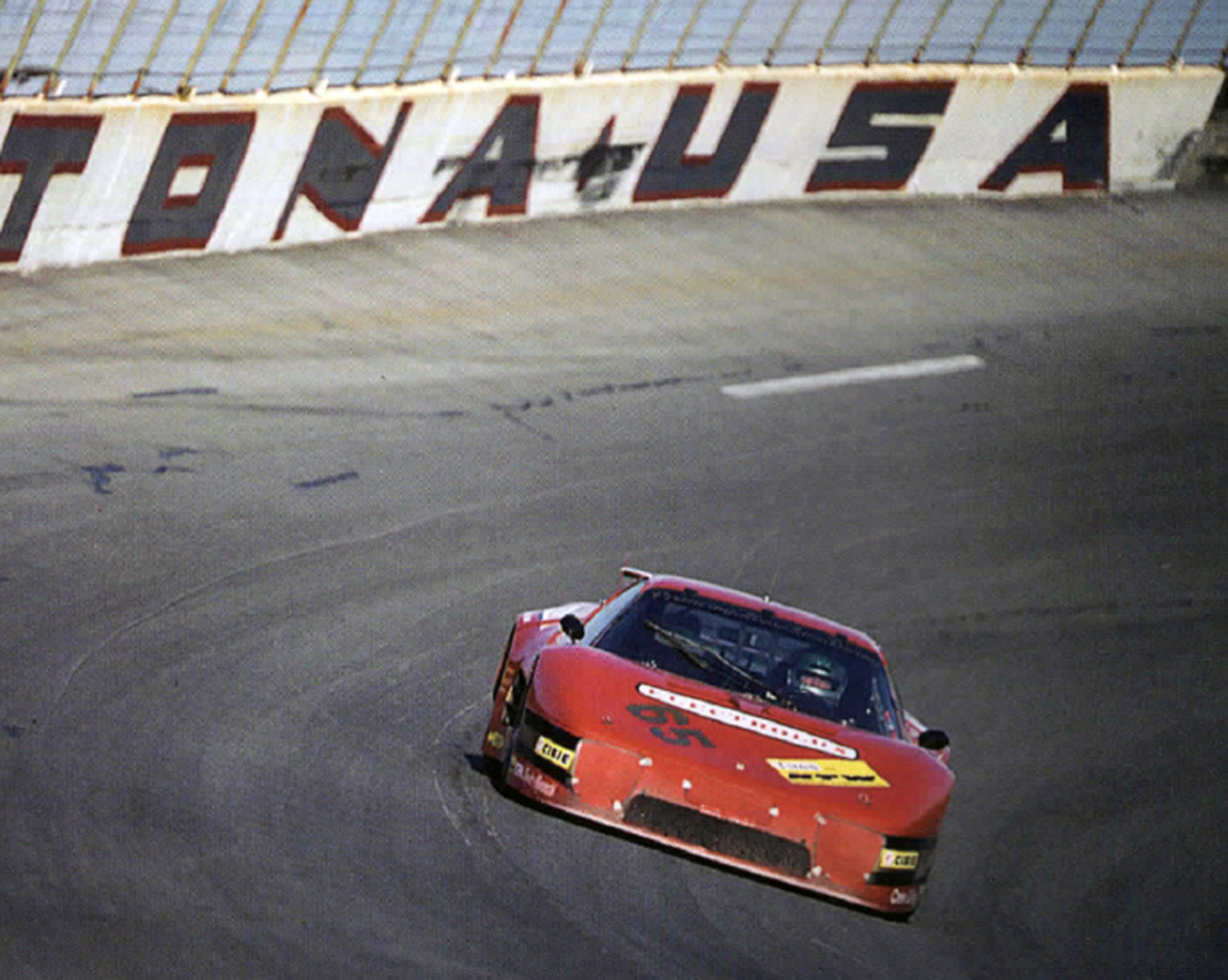
Photo courtesy of Ron Spangler

Tony and Rick Knoop before the race
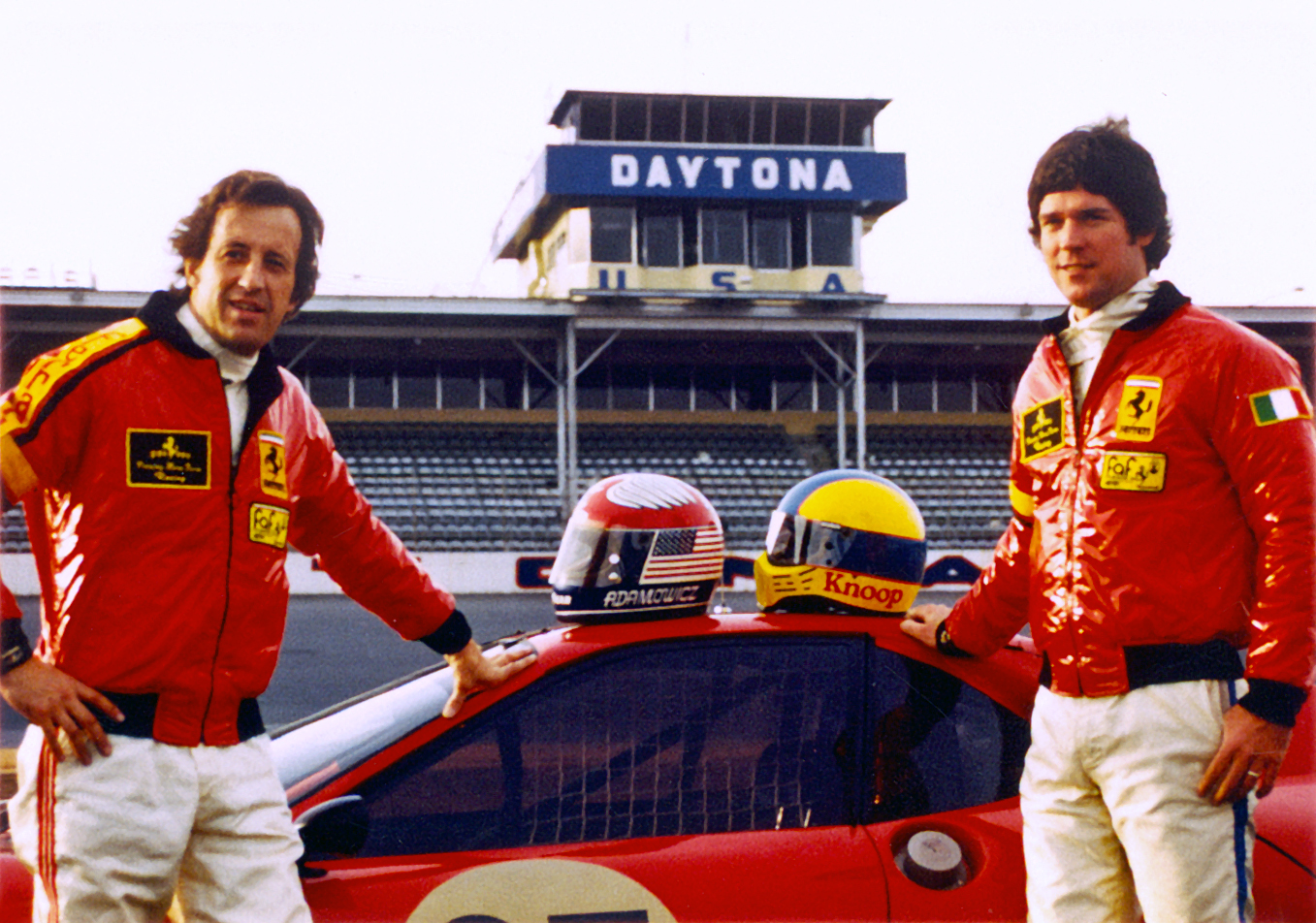
Adamowicz collection
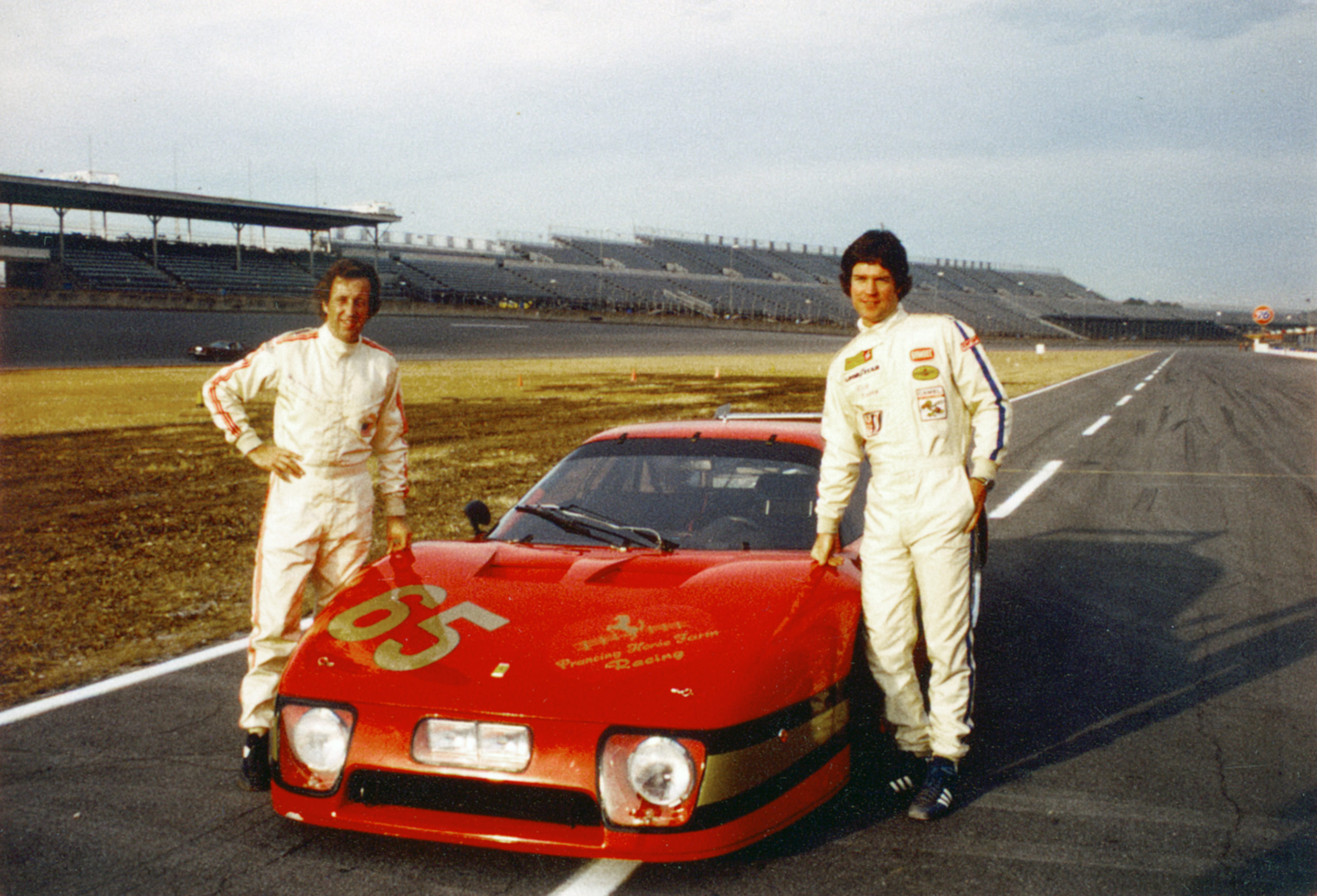
Tony and Rick Knoop on the pit lane
Early in the race:
The aerodynamic Prancing Horse Farm Ferrari.

Photo courtesy of Ron Spangler
In the infield, the car felt as if it was on rails, flat and neutral, able to be placed anywhere in traffic, but the lack of acceleration out of the turns made us sitting ducks for the 935s-it seemed like everyone could pass us. Fortunately, the longest portion of the lap was flat-out down the straight and on the banking. I had adjusted the rear wing to be as flat as possible for less drag, yet still provide neutral handling at high speed. This is where all the homework Pininfarina did in the wind tunnel paid off. On the banking, the car was effortless to drive, behaving even better than the full-on Ferrari sports-racers- like the 312 P, 512 Sand 512 M-I had driven in the early 1970s. When the BB/LM came down the back straight, it felt like a freight train; you could feel the momentum gaining every bit of the way through the banking. Our top speed was less than the Porsches’, but we could brake much later than the 935s-or anyone else-for Turn One. At the time, I had never been in a car with better stopping power. Several times during the race, I watched in the mirrors as competitors tried to keep up under braking, chuckling when 935 drivers would get suckered into staying with me and, finally finding themselves too deep, spin. Our qualifying position was not that impressive, but because the BB/LM used less fuel than the thirsty 935s, we were able to stay out longer, thus eliminating precious time lost in the pits. We steadily climbed up the ranks, and by the 13th hour, we were running third overall and gaining rapidly on the leaders.



Adamowicz collection – Bob Purgason photo
The NART entry, driven by Pete Halsmer and Al Unser, Jr. succumbs to an engine room fire after only nine laps. Glad I wasn’t driving it this year.
You don’t want to hit this wall at 212 mph – not in a Ferrari anyway!

Adamowicz collection
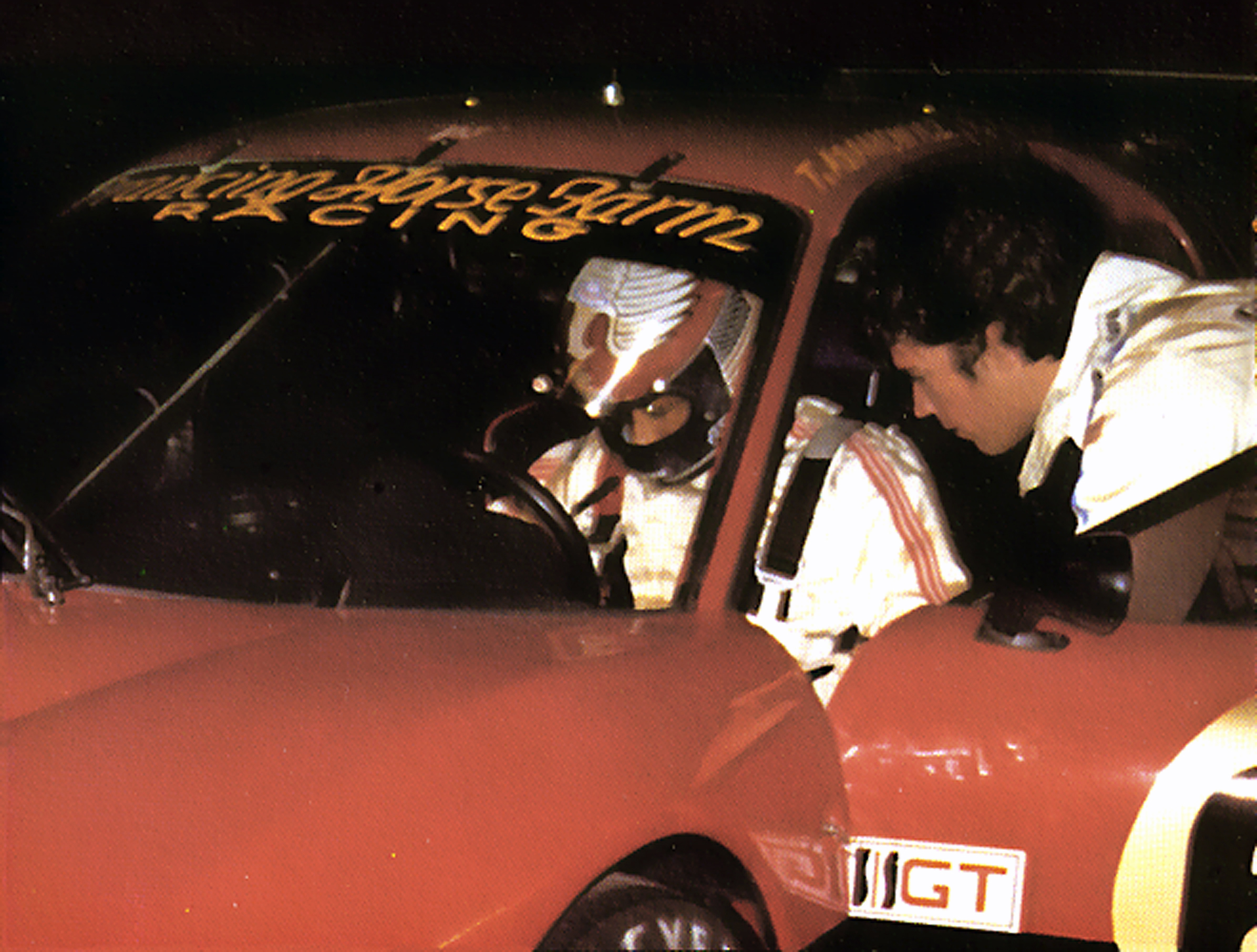
Photo courtesy of Ron Spangler
Tony is about to enjoy Daytona’s night life
You never know what will happen on Daytona’s high bank – especially at 227 mph at night!
Here’s a sight NASCAR drivers never encounter! It’s easy to see how 24 hours leaves most cars battered and bruised. Mario Andretti once said of the high banks at night: “Sometimes you get away with it and sometime you don’t.”
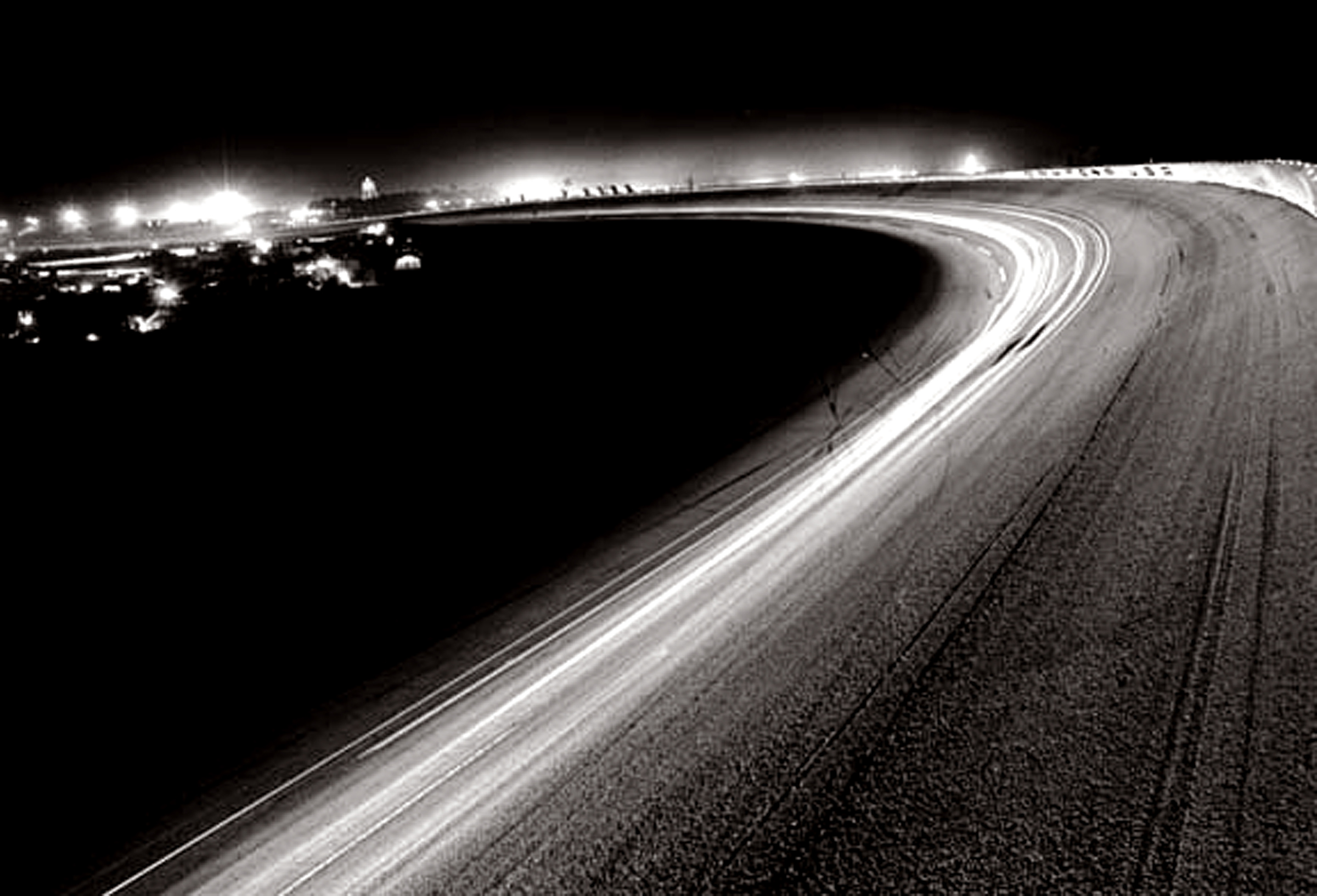
Autosports Marketing Associates, Ltd. photo – autosportsltd.com

The Culprit: Moretti’s 750 hp Momo Porsche 935. Porsche had created a “silhouette” car based loosely on their 911, called the 935. It was basically a “funny car” for road racing, nicknamed Moby Dick for it’s fantastic bodywork.
Twin turbo’s gave it 750 horsepower and a 227 mph top speed at Daytona, but that was partly offset by high fuel consumption requiring many pit stops.
The highly stressed engine wasn’t as reliable as the big normally aspirated Ferrari flat 12, so the Ferrari had a fighting chance. Unfortunately, the Porsche’s Pirelli tires were overloaded on Daytona’s high banking, which led to disaster.
I’m sure we would have won easily in 24 hours, as the car was running flawlessly. Just as I put the car into 2nd place, Moretti in his 935 burst a Pirelli tire entering turn 3 of the banking. I took the high side thinking I would avoid him as he spun towards the bottom of the banking apron. He continued to spin towards turn 4 in the banking where he collected my car. I was tapped into turn 4 wall in a spin, and the last thing I could see was a shower of sparks jetting away from the wall as I read the word DAYTONA on the wall.
I was concerned that I was going to crash into the concrete barrier backwards, however as soon as the car hit the grassy area, it dug into the ground, plowing to a stop before I hit the concrete. The dirt poured into the cockpit completely filling the inside of my full face helmet. When I took my helmet off, dirt was embedded into my sweaty face and eye area. When I flushed my eyes out at the medical station, they said I looked like a Black Face vaudeville character.
This was a terrible blow to the team, as we were the first to make a 512BB work at Daytona. In prior years, the factory crashed 2 out of 3 cars and withdrew from the race. I was supposed to drive the car at Le Mans however I was passed over by supposedly French driver requirements to enter the car. As it turned out, Carson Baird drove the team’s sister car, SN 38179 with Pierre Dieudonné and Jean-Paul Libert to sixth place behind five twin turbo Porsches. Some were the same cars we’d bettered at Daytona. So it was a real disappointment not to run this car at Le Mans.
Porsche 935 tire marks on Tony’s left front fender.

Photo courtesy of Ron Spangler

Photo courtesy of Ron Spangler
Tony was lucky to escape alive after getting taken out by the Porsche 935.
Car owners Ron & Patti Spangler after the crash
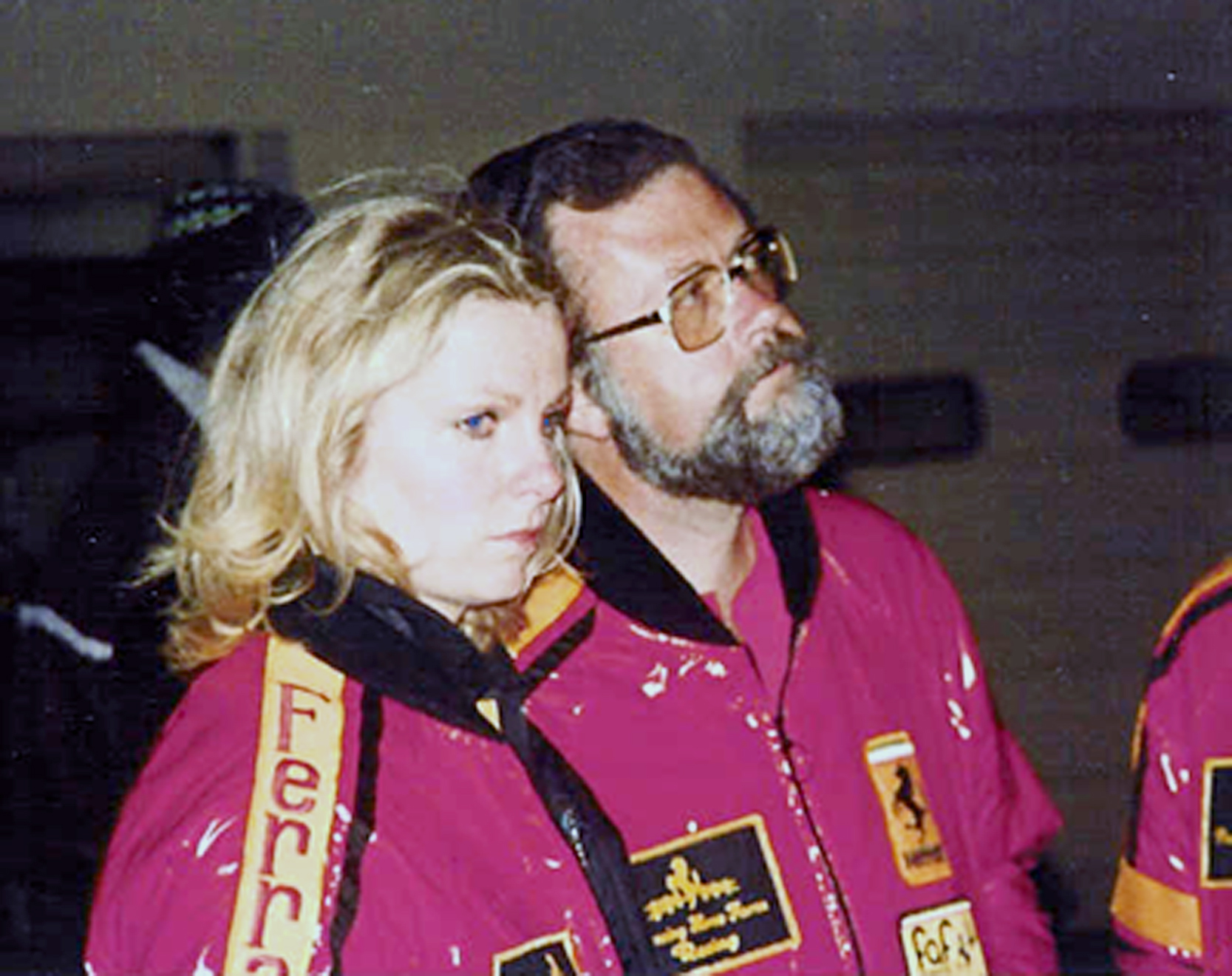
Photo courtesy of Ron Spangler